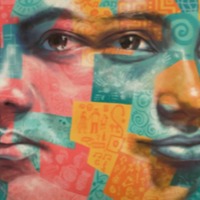
Nadia Murad (Narrative 2)
ISIS has singled out the Yazidi minority, notably its women and children, for particularly brutal treatment. In August 2014, ISIS fighters abducted hundreds, possibly thousands, of Yezidi men, women and children who were fleeing the IS takeover from the Sinjar region, in the north-west of the country. Hundreds of the men were killed and others were forced to convert to Islam under threat of death. Younger women and girls, some as young as 12, were separated from their parents and older relatives and sold, given as gifts or forced to marry ISIS fighters and supporters. Nadia was kidnapped by ISIS. when she was twenty-one years old. She was loaded on to a bus with other young women. Upon arrival in Mosul, the women were beaten, sold and forced to convert to Islam. She details how she feels about the complicity of ISIS women in the exploitation of Yazidis. After being passed from captor to captor, raped on a daily basis, and deprived of basic human comforts like food and companionship, Nadia managed to escape. She jumped over a wall, walked through the night, and knocked on the door of strangers who risked their lives hiding her until it was safe to get her to a refugee camp. From there, Nadia went to Germany.
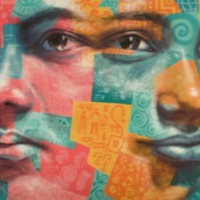
Brian
There are an estimated 403,000 people living in modern slavery in the United States (GSI 2018). Sex trafficking exists throughout the country. Traffickers use violence, threats, lies, debt bondage and other forms of coercion to compel adults and children to engage in commercial sex acts against their will. The situations that sex trafficking victims face vary, many victims become romantically involved with someone who then forces them into prostitution. Others are lured with false promises of a job, and some are forced to sell sex by members of their own families. Victims of sex trafficking include both foreign nationals and US citizens, with women making up the majority of those trafficked for the purposes of commercial sexual exploitation. In 2015, the most reported venues/industries for sex trafficking included commercial-front brothels, hotel/motel-based trafficking, online advertisements with unknown locations, residential brothels, and street-based sex trafficking. Brian* was trafficked by his dad when he was eleven years old. He was taken to an old house for child sexual exploitation. He was locked in a basement and raped, drugged, and beaten by different men.

Chris Bates
There are an estimated 403,000 people living in modern slavery in the United States (GSI 2018). Sex trafficking exists throughout the country. Traffickers use violence, threats, lies, debt bondage and other forms of coercion to compel adults and children to engage in commercial sex acts against their will. The situations that sex trafficking victims face vary, many victims become romantically involved with someone who then forces them into prostitution. Others are lured with false promises of a job, and some are forced to sell sex by members of their own families. Victims of sex trafficking include both foreign nationals and US citizens, with women making up the majority of those trafficked for the purposes of commercial sexual exploitation. In 2015, the most reported venues/industries for sex trafficking included commercial-front brothels, hotel/motel-based trafficking, online advertisements with unknown locations, residential brothels, and street-based sex trafficking. Chris Bates was trafficked for sex at 16 years old in the United States. He created a social media account after feeling isolated at school which drew attention from older men who offered to pay him for images of himself. After running away from home, Chris need money for rent and placed an advert with an escort agency which led to him being trafficked for commercial sexual exploitation. He was able to escape his exploitation and begin the process of healing after meeting his boyfriend. Chris tells of the struggles being a male survivor of sex trafficking and the role religion played in his trafficking story. Chris as set up a grassroots organization, Overcome Exploitation, to help male, trans, and non-binary people who have experienced any kind of exploitation.
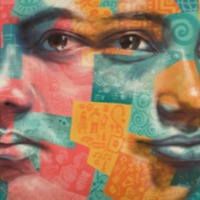
Dammayanthi K.
There are an estimated 61,000 people living in modern slavery in Saudi Arabia (GSI 2018). It is a source and destination country for men and women trafficked from South and South East Asia and Africa. People voluntarily migrate to the country to work in a variety of sectors including construction and domestic service; many of these workers are vulnerable to forced labour. Traffickers and brokers often illegally recruit migrants to work in Saudi Arabia and subsequently forced them into domestic servitude or debt bondage. Female domestic workers are particularly at risk of trafficking due to their isolation inside private residences. Non-payment or late payment of wages remains a complaint from foreign workers, while employer's withholding of worker's passports remains a significant problem. Trafficking perpetrators include businesses of all sizes, private families, recruitment companies in both Saudi Arabia and labor-sending countries, and organized criminal elements. Dammayanthi K travelled from Sri Lanka to Saudi Arabia for work in domestic service. Her employer confiscated her passport, locked her in the house and verbally abused her.
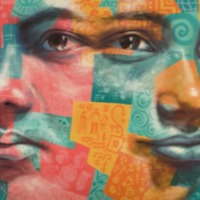
Lilis H
There are an estimated 61,000 people living in modern slavery in Saudi Arabia (GSI 2018). It is a source and destination country for men and women trafficked from South and South East Asia and Africa. People voluntarily migrate to the country to work in a variety of sectors including construction and domestic service; many of these workers are vulnerable to forced labour. Traffickers and brokers often illegally recruit migrants to work in Saudi Arabia and subsequently forced them into domestic servitude or debt bondage. Female domestic workers are particularly at risk of trafficking due to their isolation inside private residences. Non-payment or late payment of wages remains a complaint from foreign workers, while employer's withholding of worker's passports remains a significant problem. Trafficking perpetrators include businesses of all sizes, private families, recruitment companies in both Saudi Arabia and labor-sending countries, and organized criminal elements. Lilis H travelled from Indonesia to Saudi Arabia for work in domestic service. In Saudi Arabia, Lilis’ employer locked her in the house and subjected her to physical violence every day.
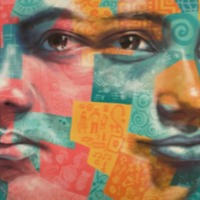
Grace
There are an estimated 136,000 people living on conditions of modern slavery in the United Kingdom (Global Slavery Index 2018). According to the 2017 annual figures provided by the National Crime Agency, 5, 145 potential victims of modern slavery were referred through the National Referral Mechanism in 2017, of whom 2,454 were female, 2688 were male and 3 were transgender, with 41% of all referrals being children at the time of exploitation. People are subjected to slavery in the UK in the form of domestic servitude, labour exploitation, organ harvesting and sexual exploitation, with the largest number of potential victims originating from Albania, China, Vietnam and Nigeria. This data however does not consider the unknown numbers of victims that are not reported. Grace was trafficked from Nigeria to the UK into forced prostitution by a local woman who used the traditional African belief of Juju to threaten her. Eventually she escaped and told the police what happened but her trafficker and the woman that sold her fled the UK.
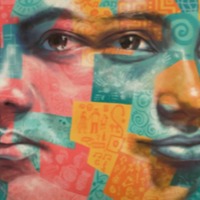
Zinab
ISIS has singled out the Yazidi minority, notably its women and children, for particularly brutal treatment. In August 2014, ISIS fighters abducted hundreds, possibly thousands, of Yezidi men, women and children who were fleeing the IS takeover from the Sinjar region, in the north-west of the country. Hundreds of the men were killed and others were forced to convert to Islam under threat of death. Younger women and girls, some as young as 12, were separated from their parents and older relatives and sold, given as gifts or forced to marry ISIS fighters and supporters. Zinab and her children were kidnapped by ISIS from her village. She was taken to Syria and sold four times, subjected to sexual violence and forced religious conversion. Zinab used a smuggling network to escape Syria after 20 months.
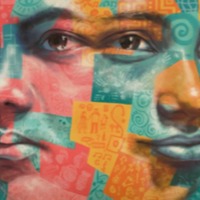
Abebi
There is an estimated 48,000 people living in modern slavery in Libya (GSI 2018). Libya is a major transit destination for migrants and refugees hoping to reach Europe by sea. Human trafficking networks have prospered amid lawlessness, created by the warring militias that have been fighting for control of territories since the toppling of Muammar Gaddafi in 2011. Highly organized trafficking and migrants smuggling networks that reach into Libya from Niger, Nigeria, Chad, Eritrea, Ethiopia, Somalia, Sudan, and other sub-Saharan states subject migrants to forced labor and forced prostitution through fraudulent recruitment, confiscation of identity and travel documents, withholding or non-payment of wages, debt bondage, and verbal, physical, and sexual abuse. In some cases, migrants reportedly pay smuggling fees to reach Tripoli, but once they cross the Libyan border they are sometimes abandoned in southern cities or the desert where they are susceptible to severe forms of abuse and human trafficking. Abebi*, a small business owner, was in need of more income after the death of her husband. She was targeted by a woman and told she could travel to Egypt to buy goods for her shop. Abebi paid the woman for a passport and ticket to Egypt, however she found herself in Libya where she was sold into domestic servitude.
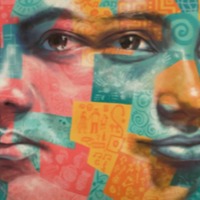
Gaby
There are an estimated 403,000 people living in modern slavery in the United States (GSI 2018). Sex trafficking exists throughout the country. Traffickers use violence, threats, lies, debt bondage and other forms of coercion to compel adults and children to engage in commercial sex acts against their will. The situations that sex trafficking victims face vary, many victims become romantically involved with someone who then forces them into prostitution. Others are lured with false promises of a job, and some are forced to sell sex by members of their own families. Victims of sex trafficking include both foreign nationals and US citizens, with women making up the majority of those trafficked for the purposes of commercial sexual exploitation. In 2015, the most reported venues/industries for sex trafficking included commercial-front brothels, hotel/motel-based trafficking, online advertisements with unknown locations, residential brothels, and street-based sex trafficking. Gaby was suffering from drug and alcohol addiction when she posted an ad online to find a job in modelling or web-camming. Her ad was answered by a college professor who rented an apartment for her and other women to stay in where men would come in to purchase sex. Gaby was afraid to leave because her trafficker had all of her information. He had her ID, her social security card, and he knew where she lived. Gaby was in a controlled environment where she was allowed to leave. She always went back because she was afraid of what would happen if she didn't. One day she found a church, went inside, and wrote a suicide note on a prayer card. The church's female pastor found the note and tracked down Gaby. The pastor told her to not go back and she gave Gaby a place to stay in her family's home. Gaby never went back, she went to rehab and became part of Wellspring Living Program for young girls and women who have been trafficked. She now supports herself with a government job and is raising her 8-year old son.
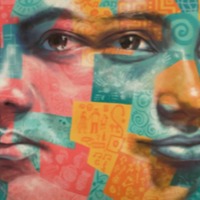
Penelope
There are an estimated 403,000 people living in modern slavery in the United States (GSI 2018). Sex trafficking exists throughout the country. Traffickers use violence, threats, lies, debt bondage and other forms of coercion to compel adults and children to engage in commercial sex acts against their will. The situations that sex trafficking victims face vary, many victims become romantically involved with someone who then forces them into prostitution. Others are lured with false promises of a job, and some are forced to sell sex by members of their own families. Victims of sex trafficking include both foreign nationals and US citizens, with women making up the majority of those trafficked for the purposes of commercial sexual exploitation. In 2015, the most reported venues/industries for sex trafficking included commercial-front brothels, hotel/motel-based trafficking, online advertisements with unknown locations, residential brothels, and street-based sex trafficking. Penelope’s* father became involved in criminal activity when she was a child which led to the repossession of their house. They moved into his friend’s house and when they became unable to pay rent, her father forced Penelope into child sexual exploitation, offering her to his friends as payment. One night when she was nine years old, Penelope was taken by her father’s friend and locked her in a room, where she was raped for days by adult men. After a few days of ‘breaking in’, Penelope was trafficked across the backroads of Mississippi, forced to see 15-20 men each night. After three years, Penelope’s mother came for her after being left by her father. It was a long road to recovery, Penelope entered into an abusive relationship as a teenager and suffered with alcohol addiction in college. She was finally able to receive help from a friend who introduced her to a church.
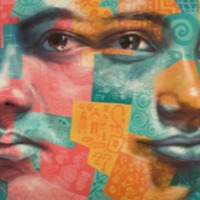
Nancy
There are an estimated 403,000 people living in modern slavery in the United States (GSI 2018). Sex trafficking exists throughout the country. Traffickers use violence, threats, lies, debt bondage and other forms of coercion to compel adults and children to engage in commercial sex acts against their will. The situations that sex trafficking victims face vary, many victims become romantically involved with someone who then forces them into prostitution. Others are lured with false promises of a job, and some are forced to sell sex by members of their own families. Victims of sex trafficking include both foreign nationals and US citizens, with women making up the majority of those trafficked for the purposes of commercial sexual exploitation. In 2015, the most reported venues/industries for sex trafficking included commercial-front brothels, hotel/motel-based trafficking, online advertisements with unknown locations, residential brothels, and street-based sex trafficking. Nancy was trafficked into prostitution, subjected to sexual abuse and violence daily. Nancy stresses the importance of education and raising awareness for both the prevention of commercial sexual exploitation and understanding how to support survivors. She highlights the need for survivors be supported by police rather than interrogated for information and have access to wider networks of support.

Hanan and Wissam
ISIS has singled out the Yezidi minority, notably its women and children, for particularly brutal treatment. In August 2014, ISIS fighters abducted hundreds, possibly thousands, of Yezidi men, women and children who were fleeing the IS takeover from the Sinjar region, in the north-west of the country. Hundreds of the men were killed and others were forced to convert to Islam under threat of death. Younger women and girls, some as young as 12, were separated from their parents and older relatives and sold, given as gifts or forced to marry ISIS fighters and supporters. Hanan and her son Wissam were taken by ISIS soldiers and sold first to an Algerian man, and then to a Syrian man. At five years old Wissam was taught to speak Arabic, read the Koran and trained in combat. If Hanan tried to stop the indoctrination of her son, she was subjected to physical beatings and threats to take him away. They were finally able to escape when Hanan told fighters she was going to call her cousin but instead called her husband who paid for his wife and son’s freedom.
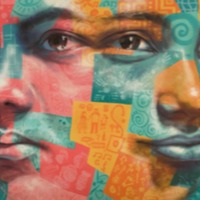
Vian
ISIS has singled out the Yezidi minority, notably its women and children, for particularly brutal treatment. In August 2014, ISIS fighters abducted hundreds, possibly thousands, of Yezidi men, women and children who were fleeing the IS takeover from the Sinjar region, in the north-west of the country. Hundreds of the men were killed and others were forced to convert to Islam under threat of death. Younger women and girls, some as young as 12, were separated from their parents and older relatives and sold, given as gifts or forced to marry ISIS fighters and supporters. Vian was 15 years old when kidnapped by ISIS in August 2014 and held for 4 months in Raqqa, Syria. Vian tells of the atrocities she witnessed against girls as young as 7 by ISIS men. One afternoon Vian ran away and was able to make it to Turkey where her Uncle picked her up and brought her home to her family.
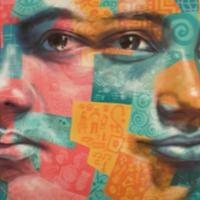
Ariana
ISIS has singled out the Yezidi minority, notably its women and children, for particularly brutal treatment. In August 2014, ISIS fighters abducted hundreds, possibly thousands, of Yezidi men, women and children who were fleeing the IS takeover from the Sinjar region, in the north-west of the country. Hundreds of the men were killed and others were forced to convert to Islam under threat of death. Younger women and girls, some as young as 12, were separated from their parents and older relatives and sold, given as gifts or forced to marry ISIS fighters and supporters. Ariana was kidnapped by ISIS in August 2014 when they invaded her school, divided the girls up and sold them. Ariana was held in ISIS captivity for 9 months and sold five times to different men. She was finally able to escape when she convinced one of the men to sell her back to her family.
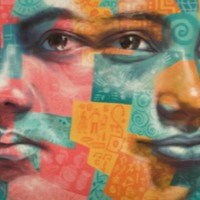
Madline
ISIS has singled out the Yezidi minority, notably its women and children, for particularly brutal treatment. In August 2014, ISIS fighters abducted hundreds, possibly thousands, of Yezidi men, women and children who were fleeing the IS takeover from the Sinjar region, in the north-west of the country. Hundreds of the men were killed and others were forced to convert to Islam under threat of death. Younger women and girls, some as young as 12, were separated from their parents and older relatives and sold, given as gifts or forced to marry ISIS fighters and supporters. Madline was 17 years old when she was kidnapped by ISIS in her hometown of Sinjar, Iraq in August 2014. She was held for 3 months before she and the other Yazidi women were able to escape.
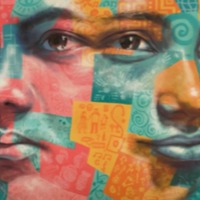
Nadia Murad
ISIS has singled out the Yazidi minority, notably its women and children, for particularly brutal treatment. In August 2014, ISIS fighters abducted hundreds, possibly thousands, of Yezidi men, women and children who were fleeing the IS takeover from the Sinjar region, in the north-west of the country. Hundreds of the men were killed and others were forced to convert to Islam under threat of death. Younger women and girls, some as young as 12, were separated from their parents and older relatives and sold, given as gifts or forced to marry ISIS fighters and supporters. Nadia Murad lived in the Sinjar district of Kurdistan in northern Iraq. Her village, Kocho, was taken by ISIS in August 2014 and people were told to convert to Islam or die. When ISIS failed to convert the Yazidi villagers, they first took the men and executed them, they took young boys to train in combat and kidnapped women and girls and enslaved them in domestic and sexual slavery. Nadine was taken with other women and girls to Mosul where they were distributed among Daesh fighters. Nadine was raped daily, forced to read the Koran and pray. After one unsuccessful attempt, Nadia was able to escape with the help of a Muslim family that lived nearby. She made it to the border with Kurdistan and was then among 1000 Yazidi women taken to Germany for treatment for their trauma.
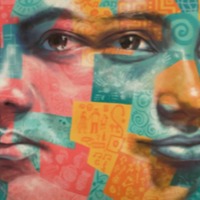
Bilal
There are an estimated 90,000 people living in modern slavey in Mauritania (GSI 2018). Mauritania is one of the last countries in the world where people are still born into hereditary slavery, which means they are literally owned by other people, and forced to work for masters their entire lives. People in slavery come from the Haratine ethnic group, historically enslaved by White Moors. They can be bought and sold, or given as gifts, and face a lifetime of exploitation and abuse. Rape of female slaves is common and their children also become slaves. They are Muslims, and many believe that it is Allah’s wish for them to be enslaved because they are told that their paradise is bound to their Master. In reality, Islam dictates that a Muslim cannot enslave a fellow Muslim. Since 2007 slavery has been criminalised in Mauritania but the law is not enforced and the government is reluctant to acknowledge the existence of the problem. Born in 1955, Bîlal Ould Semetta was enslaved in inherited bondage throughout his childhood until he was 25 years old. At a young age he was sent to work for the cousin of the family to whom he was enslaved. He lived as a shepherd, cut off from his family, refused an education and banned from practising religion. It was not until the drought of 1973 that Bîlal was no longer needed and was allowed to return to his family.
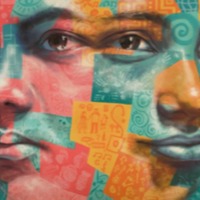
Mbarek B
There are an estimated 90,000 people living in modern slavey in Mauritania (GSI 2018). Mauritania is one of the last countries in the world where people are still born into hereditary slavery, which means they are literally owned by other people, and forced to work for masters their entire lives. People in slavery come from the Haratine ethnic group, historically enslaved by White Moors. They can be bought and sold, or given as gifts, and face a lifetime of exploitation and abuse. Rape of female slaves is common and their children also become slaves. They are Muslims, and many believe that it is Allah’s wish for them to be enslaved because they are told that their paradise is bound to their Master. In reality, Islam dictates that a Muslim cannot enslave a fellow Muslim. Since 2007 slavery has been criminalised in Mauritania but the law is not enforced and the government is reluctant to acknowledge the existence of the problem. Mbareck ould Mahmoud was born into inherited slavery in 1970. Shared among different families, Mbareck was forced to live as a nomadic shepherd as well as performing domestic work. Mbareck and his sister were subjected to physical violence and often had their food restricted. He notes how some families were more lenient than others, some allowing him and his sister to go to Qoranic school while others threatened him if he ever went again. Mbareck notes how his life changed when someone who had previously escaped slavery visited the village and told him and his sister that they could do the same. After escaping and returning to their father, Mbareck began working odd jobs at a cinema for a small sum of money. Mbarek later became an Islamic preacher.
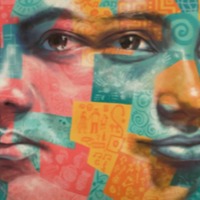
Noor
There are an estimated 520,000 people in enslavement in the Arab States. Within the region, Syria, Iraq, and Yemen had both the highest prevalence of modern slavery and the highest absolute number of victims, accounting for 76 percent of the victims in the region. There is an estimated 174,000 people enslaved in Iraq (GSI 2018). Women and girls have been kidnapped by ISIS. Bought and sold like cattle in markets, raped and tortured daily, they have experienced unspeakable horrors at the hands of their captors. Noor is 22. She was kidnapped by ISIS in 2012, from Kojo in Northern Iraq. She was held captive for several months, suffering daily rape and horrific torture. Incredibly, she managed to escape and today, she is desperate to share her experiences and to raise awareness about the ongoing suffering among those who have escaped.
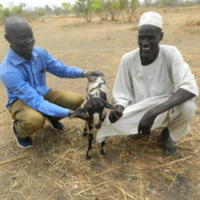
Kiir Uchan Majok
There are an estimated 465,000 people living in modern slavery in Sudan (GSI 2018). Between 1983 and 2005, the central government of Sudan enslaved tens of thousands of black South Sudanese Christian and traditionalist people. It was part of a genocidal war against South Sudan, with a simple aim: to force South Sudan to become Arab and Muslim. Kiir Uchan Majok was captured by Muslim’s and enslaved in Sudan, forced to work on a farm under the threat of constant violence.